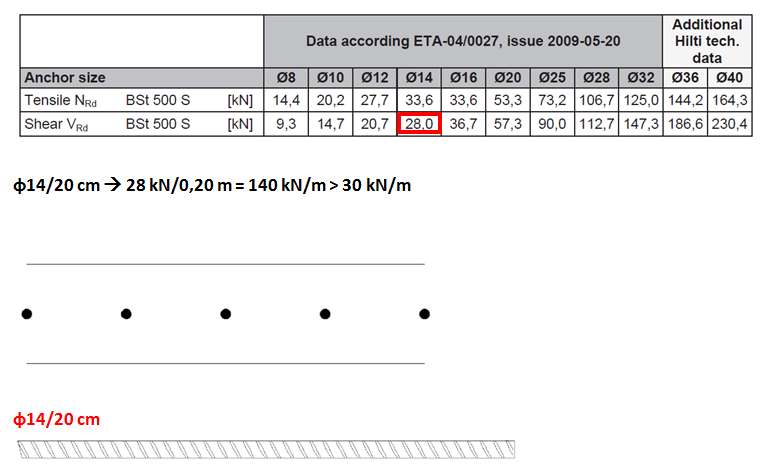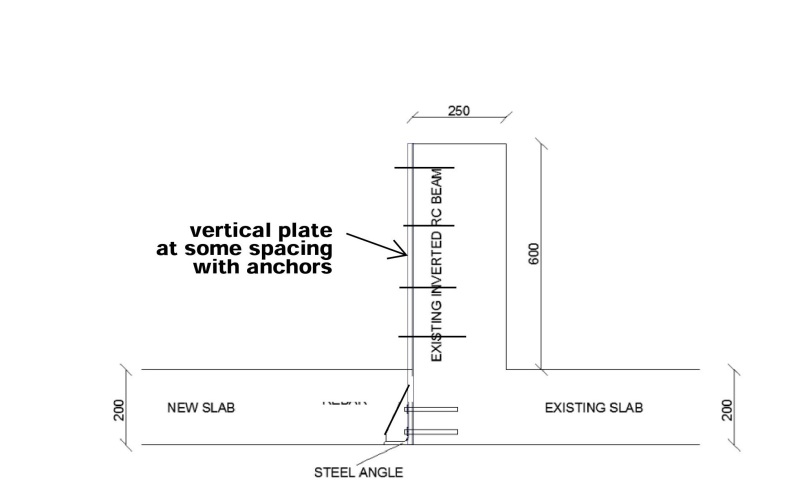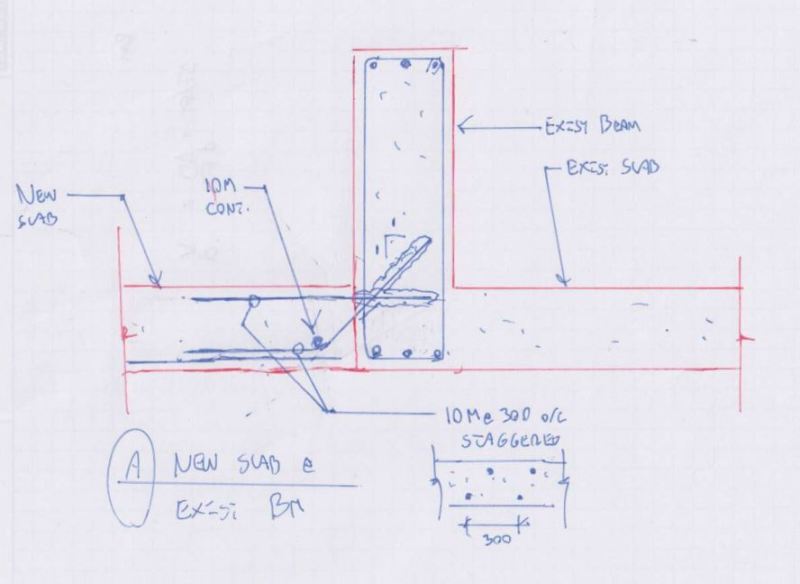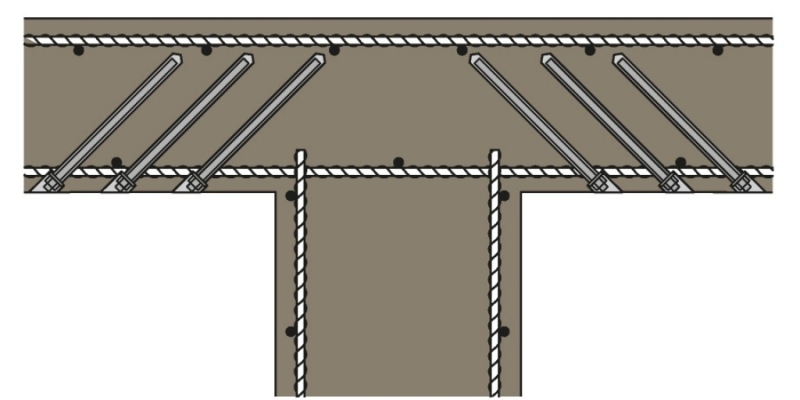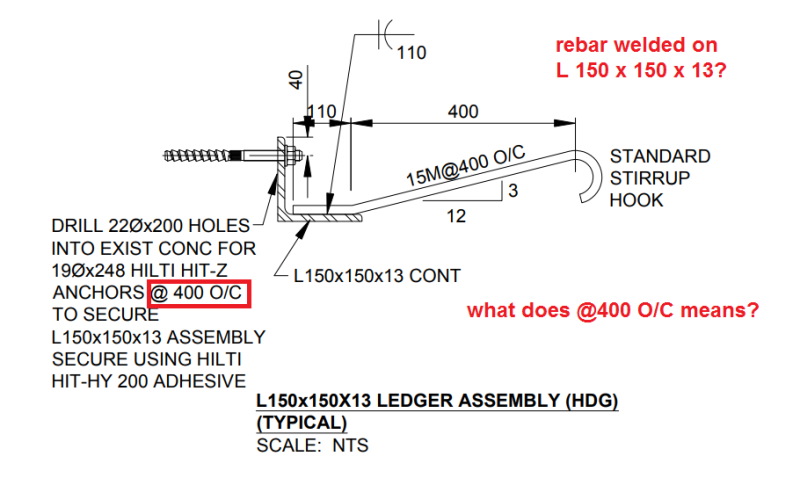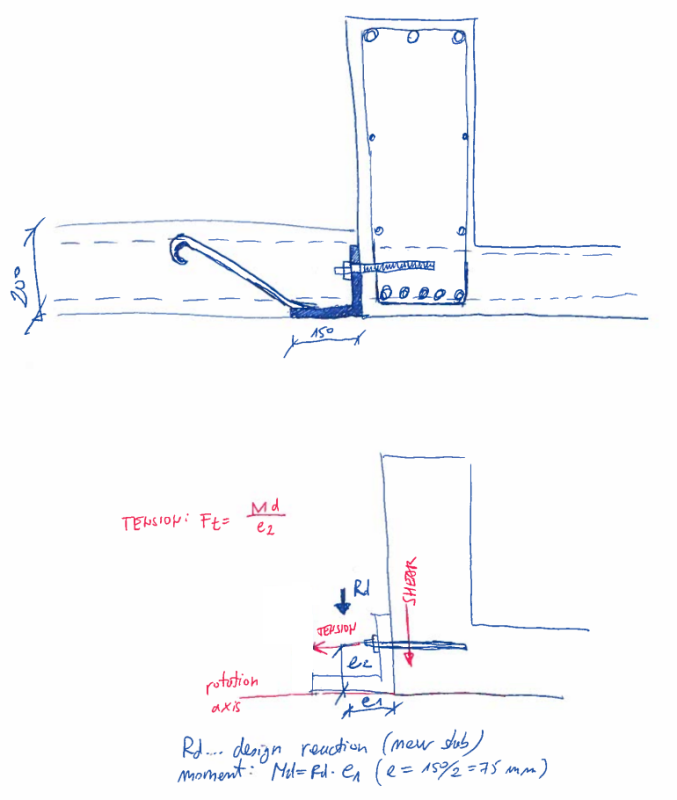- I think that you're right to be concerned in this particular application. The inability to guarantee moment on the joint makes traditional shear friction dubious. And, treated as a pure dowel, the top spalling is an issue as you've identified. Lastly, because you're dealing with an upturned beam, the issue of
where you deliver the shear on the beam is of some importance. Kind of like the hanger reinforcement phenomenon. The higher you deliver the slab shear into the beam, the less the chance that a wedge of concrete will just shear off the bottom of that beam.
- Mechanically, I think that you're proposed detail is pretty much ideal. And experience has taught me that many engineers would consider that the preferred detail. Your shear transfer mechanism is robust and the shear is delivered well above the bottom of the beam stirrups.
- I only have two concerns with your proposed detail and neither is technical in nature. Firstly, that angle may need to be fireproofed. That's extra effort and unsightliness if the condition will be exposed. Secondly, if that's the only structural steel in the contract, then I'd prefer to omit it so that there can be no structural steel contract at all. These issues might lead me to omit the angle and go with a dowel only connection.
- Rather than utilizing shear friction, my preference would be to treat it as a true dowel connection. This is a bit annoying in north america as, to my knowledge, we don't have a sanctioned method for pure dowel action. Just adaptations of appendix D. European codes, and Hilti in general, deal with this more explicitly I think so that's the path I'd be inclined to take.
- I also like dowels centered within the slab depth for the reasons mentioned by others above.
- I'm less concerned that others with respect to the use of large diameter dowels in this situation. Whenever I've run the numbers on these things, even modest dowel diameters will quickly change the governing failure mode to concrete shear breakout which is largely unaffected by dowel diameter. And I feel that smaller diameter dowels tend to do less harm to the receiving substrate.
- Conceptually, it would be nice to have some top side dowels just to keep the joint closed up tight.
Paying homage to the points above, I've proposed a detail below as an alternate to some of the others that have been discussed thus far. Part of what I like about it is that it mirrors what you'd do in a new construction joint: provide top steel and run your bottom bars over top of the beam bottom bars. The detail would require the low dowels be installed prior to setting the form work in that area. Depending on your situation, that may or may not be a problem.
I like to debate structural engineering theory -- a lot. If I challenge you on something, know that I'm doing so because I respect your opinion enough to either change it or adopt it.
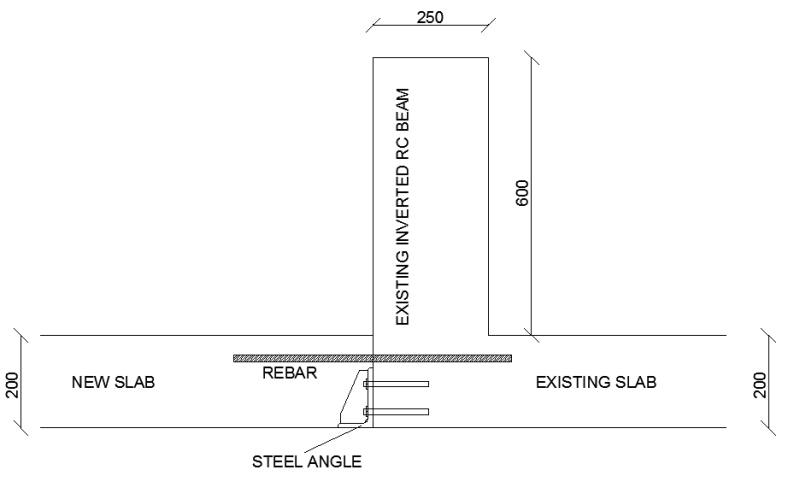


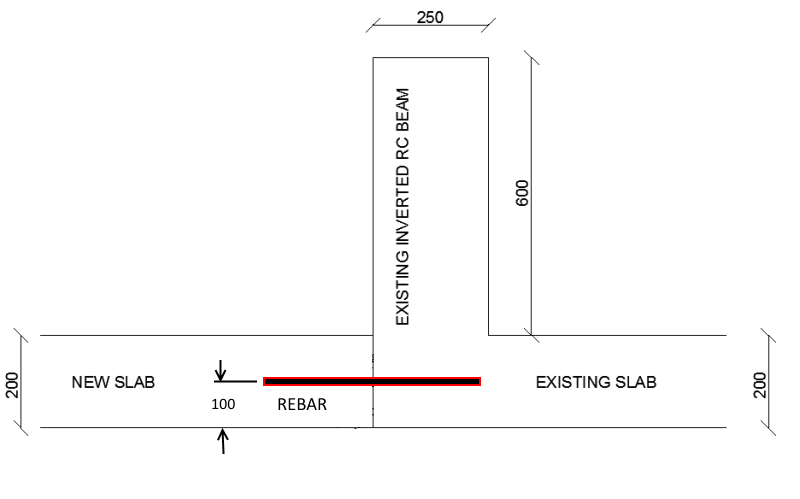
![[idea] [idea] [idea]](/data/assets/smilies/idea.gif)
![[r2d2] [r2d2] [r2d2]](/data/assets/smilies/r2d2.gif)
